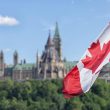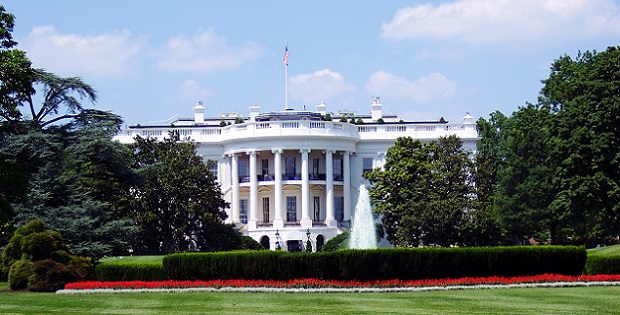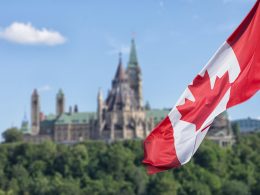by Gene Podkaminer, CFA, Franklin Templeton Investments
During the last week of February, the S&P 500 Index fell 11.5%—the worst week for US stocks since the 2008 global financial crisis (GFC).1 In addition, the CBOE Volatility Index (VIX), the so-called “fear gauge,” rose to levels not seen since the GFC, and US stocks have been volatile ever since.2
Ever-increasing fears about the potential effects of the coronavirus (COVID-19) and its ultimate impact on the global economy are likely the main driver of recent US equity market volatility. However, the narrowing of the Democratic field ahead of the 2020 US presidential election has been a significant driver of volatility in certain sectors, including health care, financials, technology and energy, as different presidential candidates have come up and down the popularity curve.
Headlines related to the US presidential primaries have created a lot of noise, particularly on how different Democratic presidential candidates might change existing policies if they were to secure the nomination and defeat President Donald Trump. For the first few months of 2020, Bernie Sanders was widely regarded as the frontrunner to secure the Democratic nomination for president. Yet, after the Super Tuesday elections on 3 March, Joe Biden became the frontrunner based on delegate counts and momentum.
Despite the uncertainty associated with the particular Democratic candidate that will face President Trump in November, we believe it’s important to separate policy from politics. Experience tells us politics has a lot to do with what people say, while policy is what’s actually important from an investor’s perspective. In our view, the probability of policies actually changing to either benefit or harm economic activity and capital markets is much different than what politicians say on the campaign trail.
Even if a Democratic candidate moves into the White House next January, chances are we will be looking at a divided government between the houses of Congress—with the Senate likely to remain in Republican control. If so, it will remain challenging for a new Democratic president to implement significant fiscal policy changes.
Another key element of the infrastructure that ultimately underpins markets are central banks, and the actions of the US Federal Reserve (Fed) in particular. Part of the reason this recent period of equity market volatility has been notable is simply because it is a return to a more traditional, historical pattern of volatility in stock markets.
In recent years, volatility has been lower than normal, as the Fed and other central banks have turned more of their attention to the stability of capital markets in addition to their traditional focus on the real economy. This shift in focus makes sense, as rapid changes in investor wealth can drive changes in demand, consumer behaviour, and eventually gross domestic product (GDP).
However, an element we watch carefully is the degree of political independence of the Fed—and other central banks. Investors count on central bank independence to ensure the stability of currencies and prices. If we start to see a significant change in central bank independence, we become more concerned about politics having a more dramatic—and long-lasting—impact on capital markets.
On the interest-rate front, it’s clear that the global coronavirus outbreak has led to growing recognition of the limits of monetary policy as the only tool for managing economic shocks. There is a need for fiscal policy to be added into the toolkit. Fiscal policy requires political will and consensus to execute, and that’s not readily available in the United States, or in most other developed geographies at present. Once again, it’s important to separate politics—what people say—and policy that is actually feasible to implement.
So, where does that leave an investor? Our base case is that there is about a 60% probability that global GDP will run at 2.5% this year, down about 0.5% from GDP estimates in early 2020.3 This base case means limited and temporary labor market impacts from the virus, driven partially by reduced business travel, tourism, and of course supply chain issues like factory closures. We think that there’s going to be some substitution and a bit of stabilisation over the coming months that underpin this prediction.
We have our bear base probability at 25%, that the politics and coronavirus impacts are worse and longer-lived than expected, and a 15% probability bull case scenario that has economies and markets recovering more quickly than expected. Our portfolios are positioned for the base case, and essentially neutral vs. their benchmarks from an overall risk perspective.
From a regional allocation perspective, we continue to favour countries that have more flexibility in monetary and fiscal policy terms to respond to the type of growth shock that we’re seeing. Examples include the United States and the United Kingdom. We believe the eurozone, which has a more constrained monetary policy and its own fiscal challenges, will face a tougher road ahead.
We would end as we generally do, with the message that it’s much easier to prepare for shocks—be they related to coronavirus, a Bernie Sanders nomination, or other surprises—than repair from shocks. A longer-term view of investment goals and broad diversification are essential, particularly into asset classes that may have been out of favour during this most recent expansion.
Important Legal Information
This material is intended to be of general interest only and should not be construed as individual investment advice or a recommendation or solicitation to buy, sell or hold any security or to adopt any investment strategy. It does not constitute legal or tax advice.
The views expressed are those of the investment manager and the comments, opinions and analyses are rendered as of publication date and may change without notice. The information provided in this material is not intended as a complete analysis of every material fact regarding any country, region or market.
Data from third party sources may have been used in the preparation of this material and Franklin Templeton (“FT”) has not independently verified, validated or audited such data. FT accepts no liability whatsoever for any loss arising from use of this information and reliance upon the comments, opinions and analyses in the material is at the sole discretion of the user.
Products, services and information may not be available in all jurisdictions and are offered outside the U.S. by other FT affiliates and/or their distributors as local laws and regulation permits. Please consult your own professional adviser or Franklin Templeton institutional contact for further information on availability of products and services in your jurisdiction.
Issued in the U.S. by Franklin Templeton Distributors, Inc., One Franklin Parkway, San Mateo, California 94403-1906, (800) DIAL BEN/342-5236, franklintempleton.com—Franklin Templeton Distributors, Inc. is the principal distributor of Franklin Templeton’s’ U.S. registered products, which are not FDIC insured; may lose value; and are not bank guaranteed and are available only in jurisdictions where an offer or solicitation of such products is permitted under applicable laws and regulation.
CFA® and Chartered Financial Analyst® are trademarks owned by CFA Institute.
What Are the Risks?
All investments involve risks, including possible loss of principal. The value of investments can go down as well as up, and investors may not get back the full amount invested. Stock prices fluctuate, sometimes rapidly and dramatically, due to factors affecting individual companies, particular industries or sectors, or general market conditions. Bond prices generally move in the opposite direction of interest rates. Thus, as the prices of bonds in an investment portfolio adjust to a rise in interest rates, the value of the portfolio may decline. Special risks are associated with foreign investing, including currency fluctuations, economic instability and political developments. Investments in emerging markets, of which frontier markets are a subset, involve heightened risks related to the same factors, in addition to those associated with these markets’ smaller size, lesser liquidity and lack of established legal, political, business and social frameworks to support securities markets. Because these frameworks are typically even less developed in frontier markets, as well as various factors including the increased potential for extreme price volatility, illiquidity, trade barriers and exchange controls, the risks associated with emerging markets are magnified in frontier markets.
______________________________________
1. Source: S&P Dow Jones Indices, as at 5 March 2020. Stocks represented by the S&P 500 Index. Indices are unmanaged and one cannot directly invest in them. They do not include fees, expenses and sales charges. Past performance is not an indicator or guarantee of future performance. See www.franklintempletondatasources.com for additional data provider terms and conditions.
2. The CBOE Market Volatility Index measures market expectations of near-term volatility conveyed by S&P 500 stock index option prices. Indices are unmanaged, and one cannot directly invest in them. They do not include fees, expenses or sales charges. Past performance is not an indicator or a guarantee of future performance.
3. There is no assurance any forecast, projection or estimate will be realized.
This post was first published at the official blog of Franklin Templeton Investments.
















